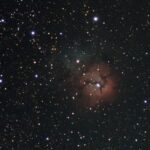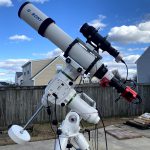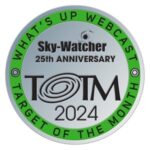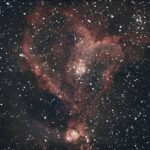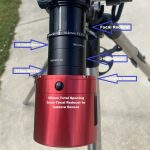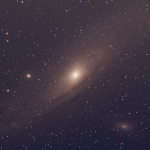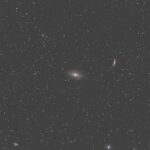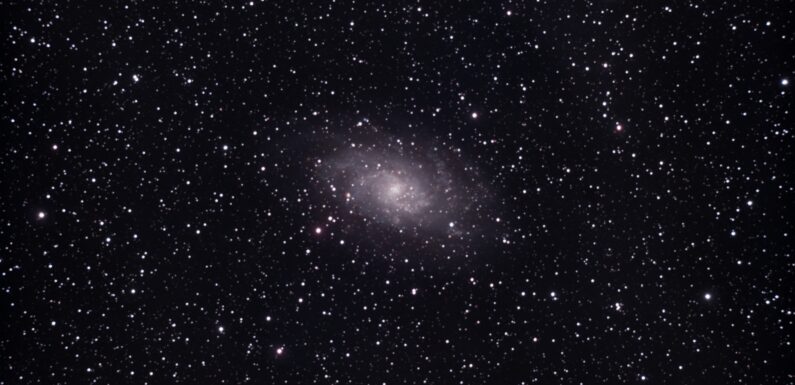
Nice night to grab some light from a far away place. Cool in the low 40s (upper 30s by the end of the night), very nice an clear with no Moon. The plan for the night was to shoot a galaxy, something I had recently shot with the 102ED, to compare with FOV in the AT66ED and to try out the SVBONY SV240 Multi-Narrowband filter. I picked M33, the Triangulum Galaxy since I had collected data from it with no filter through the 102 in early September.
| Primary (Imaging) | Secondary (Guiding) |
|---|---|
| Scope: Astro-Tech AT66ED with .8 Focal Reducer (320mm – F/4.8) Filter: SVBONY SV240 Multi-Narrowband Camera: ZWO ASI294 MC Pro, Cooled to -10 C Focuser: Gemini Autostar Focuser Mount: Sky Watcher EQ6-R Pro |
Scope: SVBONY SV165 30mm F/4 Guide Scope Camera: Orion Star Shooter Autoguider (OSSAG) |
| Telescope Control, Image Acquisition, and Image Processing Software | |
|
Equipment Control and Imaging Software: NINA/PHD2/ASCOM on a Mini-PC Processing Software: GraXpert, Siril astronomical image processing tool, Siril’s Interactive Companion (Sirilic) |
|
Messier 33 (M33), or the Triangulum Galaxy, is a spiral galaxy in the constellation of Triangulum. The galaxy is part of the local group of galaxies which includes the Milky Way Galaxy and the Andromeda Galaxy. M33 is approximately 2.73 million light-years from Earth.
I uncovered the scope and connected everything up at around 4 PM. Started cooling the camera to -10 C and then waited for the Sun to go down. By 5:45 PM it was dark and I did a three-point polar alignment. 6:30 PM was after astronomical dark (6:22 PM), so I kicked off the NINA sequence. The session was logged to my LightBucket.
Typically I focus at bin 1×1, but I shoot at bin 2×2. Tonight I set up the autofocus to run capture using bin2. The focus curve looked normal, focus was a little over 100 more steps inward than what it was calculating at bin1. After running autofocus at bin2, the focus at bin2 was very nice (best I think I have had it).
NINA performed a meridian flip around 9:27 PM. For the meridian flip NINA move the scope to the other side of the mount, re-centers the object, runs autofocus, then restarts the guiding. This all took a little more than 5 minutes to complete, but it completed with out issue and NINA restarted the exposure session. The session finished up shortly after 11 PM, parking the scope and warming the camera.
This is 80 x 180 seconds (4 hours) of exposures at 121 gain, 30 offset, and bin 2×2 using the SVBONY SV240 Multi-Narrowband. Stacked using Sirilic then cropped, background extracted, and denoised with GraXpert. Final stretching and processing in Siril.
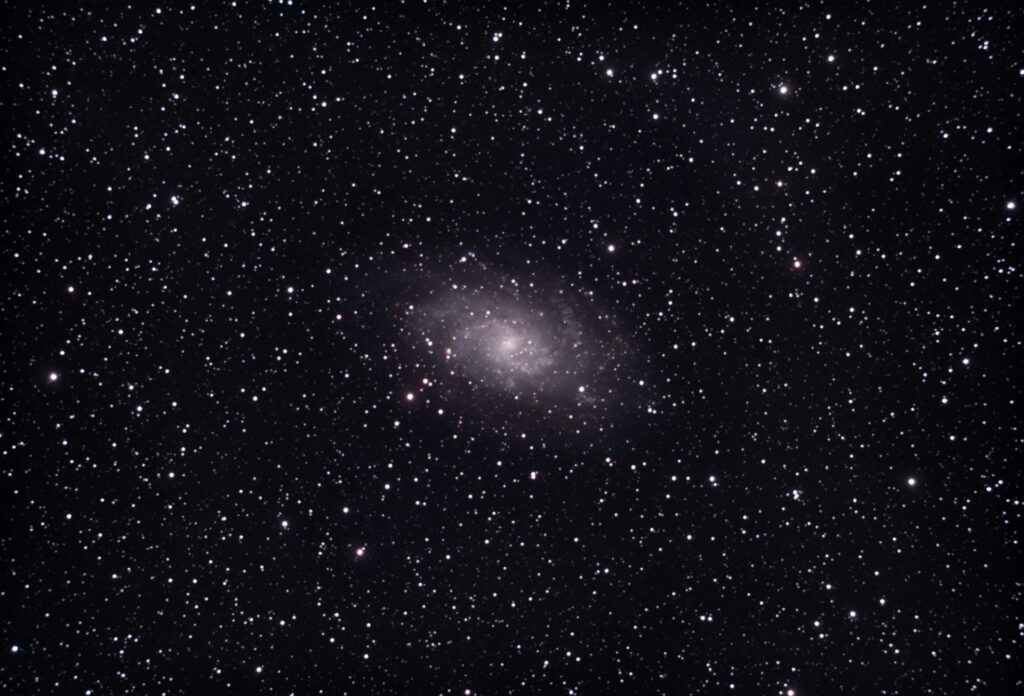
Overall very nice view of M33 I think. Nice star field full of pretty round stars.
The galaxy was reading a bit orange/red so I pulled the blue channel up a little using the Generalised Hyperbolic Stretch Transformations tool in Siril. I increased the saturation of the Pink-Red/Red-Orange hue a slight bit to get some of the nebulosity around the bright regions in the galaxy to pop some. Then increased the Global hue to about .25. The image was very easy to stretch, I believe this is probably due to the multi-band filter removing a lot of the extra light noise (light pollution, neighbors flood lights, etc).
To compare here is 4 hours (80 x 180 seconds) of light from the Triangulum Galaxy captured on 09/09/2024 through the SV503 102ED at 570mm, F/5.6, with no filter.
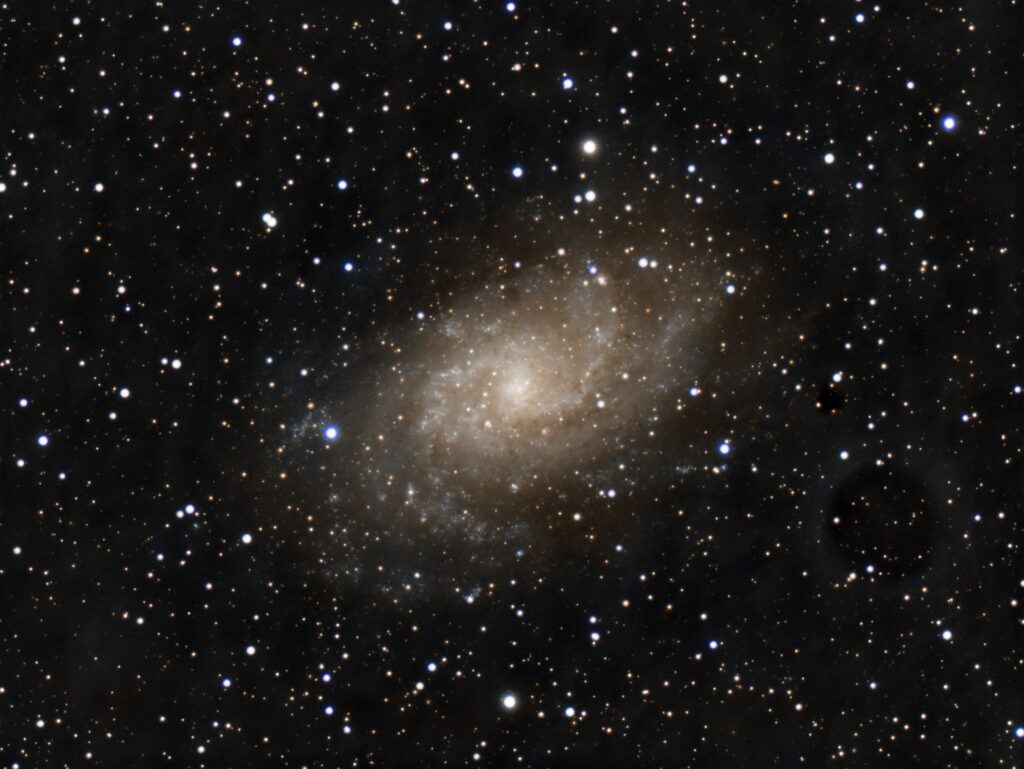
Definitely a tighter FOV, M33 really fills up the frame in this view. The blues look a little nicer in this image I think.
Nice dust lane details in both captures.
M33, with the SVBONY SV240 Multi-Narrowband, in the SV503 102ED, will likely yield some fantastic results… another night.
Next up I think I am going to put the ZWO Duo-Band filter in the drawer and try some wide field nebula shots, which is why I put the 66 on the mount in the first place 🙂


